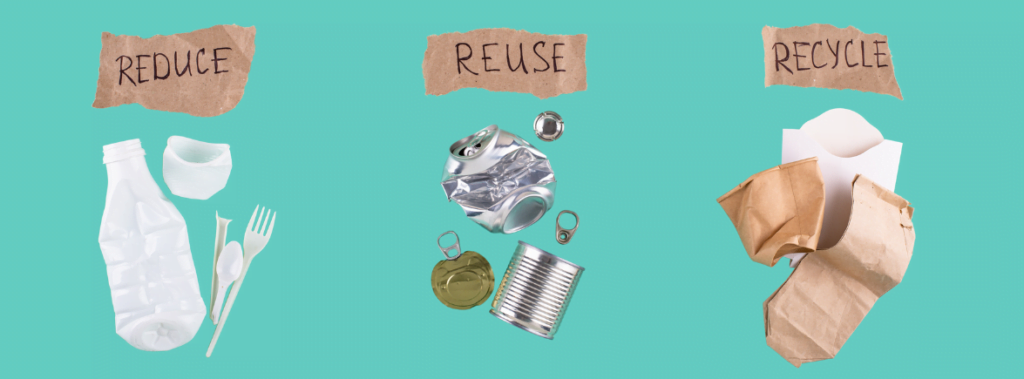
“We are not above nature, we are a part of nature.-” Jennifer Nini
It’s that time again! Honestly, it’s always that time in my books. Time to take a little look at how we interact with our environment and see if there’s anything we can do to help out. Even if it’s just a simple switch in which kinds of products we regularly use, every little bit helps. Time for me to give you some tips for helping your local environment. Admittedly a lot of what I do is centered around my garden, but there are plenty of little ways you can help that fit any lifestyle and most of them are easy-peasy-nice-and-cheesy.
Reduce, reuse, recycle and… rot!
You’ve heard this from me before. I love composting. It saves money on garden fertilizer. It saves the stink of your kitchen trash can and it’s as easy as keeping scraps in a smaller container until you can run it out to the garden compost pile. Before I get too excited about compost, let me briefly talk about scraps in general. It’s estimated that 30% to 40% of food production ends in waste. While there’s nothing you personally can do about major food production waste, you can mitigate what waste your own family produces by micro-adjusting some bad habits. How many times do we throw out something because we simply forgot it was in the fridge until it was way past its life expectancy? Keeping track of expiration dates is a major step in cutting back on food waste followed closely by reusing leftovers. If reheating leftovers doesn’t sound that good to you, consider cooking with leftovers: leftover bread can make croutons, leftover rice can be added to any soup… Most food preparation scraps can be used again: vegetable scraps and leftover bones can be used to make stock which is a very versatile cooking ingredient. At the end of the day, there will be food that simply must get thrown out, but dig a little deeper and you may still find more uses for them. I often add egg shells and coffee grounds (tea leaves too) to my garden and if my milk goes bad? Well…my garden just gets to have a full range of snacks.
On a small side note: here’s a nice book to take a look at some ways to reduce consumption in general.
“The greatest threat to our planet is the belief that someone else will do it.” Robert Swan
Which leads me to the next R. Rot–or rather–composting! You can make it as complicated as you want or you can just bury scraps directly into the ground. Honestly, it’s whatever you’re willing and able to do; good habits stick better if they’re not overly complicated or difficult. Pretty much any food scrap can be composted, but did you know what else can be composted? Cardboard and paper. Do you still have an old phone book sitting on your coffee table? What about that stack of newspapers beside it? Do you shred all your personal documents and then don’t know what to do with it? That’s right, looks like delicious worm food to me. Grass clippings, fallen leaves, sawdust you name it, if it’s plant-based, it can be composted. Just toss it on the pile and let nature work its magic. What about the stuff we can’t compost? Good question. Glad you asked. Recycling!
Did you know that annually Salina produces 17,000 tonnes of trash? That’s almost 2400 elephants! Or 425 semi-trailers stretching down the length of 9th street from Walmart all the way to-Sorry. Getting a little ahead of myself. What better way to cut down on waste than to compost what can be composted and recycle the rest? And guess what; Salina has a drive-thru recycling center that’s just too convenient not to use. Just pull in and they’ll unload your recycling, no sorting necessary. Check out their page for acceptable items and hours.
Here’s another R to go with our reduce, reuse and recycle motto: repair. Have you ever thrown out a moth-eaten t-shirt because of a hole? What if I told you it was super easy to repair with even the most beginner sewing skills? Check out this book.
If you enjoy sewing, why not try putting a cute bit of embroidery over a hole or patch it with some fun color? Repairing your clothes has the potential to make your items that much more interesting and one of a kind.
Salina Public Library has so many resources to teach you skills like these or help you enhance the ones you already have. There are more than just books that your card gives you access to. Have you ever visited CreativeBug? Learn from the masters themselves with every imaginable crafting skill videos: these skills are perfect for repurposing and repairing objects that would otherwise be tossed. Sometimes items are too far gone to repair, but that’s ok. There’s an answer to that too: upcycling. Upcycling is turning something broken beyond repair into something entirely else. Here’s a personal example of mine; I’ve taken all of my old jeans that are too damaged to be repaired or donated and have turned them into denim yarn. And guess what? I crocheted an area rug out of them! That’s what upcycling can do. Remember that moth-eaten t-shirt? Check out this book for some great upcycling ideas.
Here are several other books on that same upcycling topic:
Upcycling: Create Beautiful Things With the Stuff You Already Have
Upcycling: 20 Creative Projects Made from Reclaimed Materials
Modern upcycling: A User-Friendly Guide to Inspiring and Repurposed Handicrafts for a Trendy Home
“Waste isn’t waste until we waste it-” William
Honestly, I could go on and on about the R’s of helping the environment, but I don’t want to overwhelm anyone so I think it’s time I wrap this up. You’ve probably heard the saying that practice makes perfect, but when I was young and going to Taekwon-do, my teacher taught us that “practice makes permanent.” The idea is that you can never be 100% perfect at something, but if you practice doing things well, you will be permanently well. On that note, there is no such thing as recycling or upcycling or composting perfectly, but the efforts combined (no matter how small) are what makes a big difference. We don’t need one person doing everything perfectly, we need lots of people doing small things imperfectly, so go easy on yourself. That’s all for this time. Happy reduce, reuse, recycle, rot and repairing!

About The Author: Rebecca
Rebecca is a circulation clerk here at Salina Public Library. She has lived in Salina since shortly after she received her B.A from Bethany College in 2010. She graduated with a double major in English and a contract major in Philosophy of the 19th Century. She enjoys reading about trees, talking about plants, and nature walking on the trails around Salina. When she's not here you can find her thrifting, composting and tracking down a good coffee. She welcomes any garden pictures and can be reached at circ.rebecca@salinapublic.org.
More posts by Rebecca